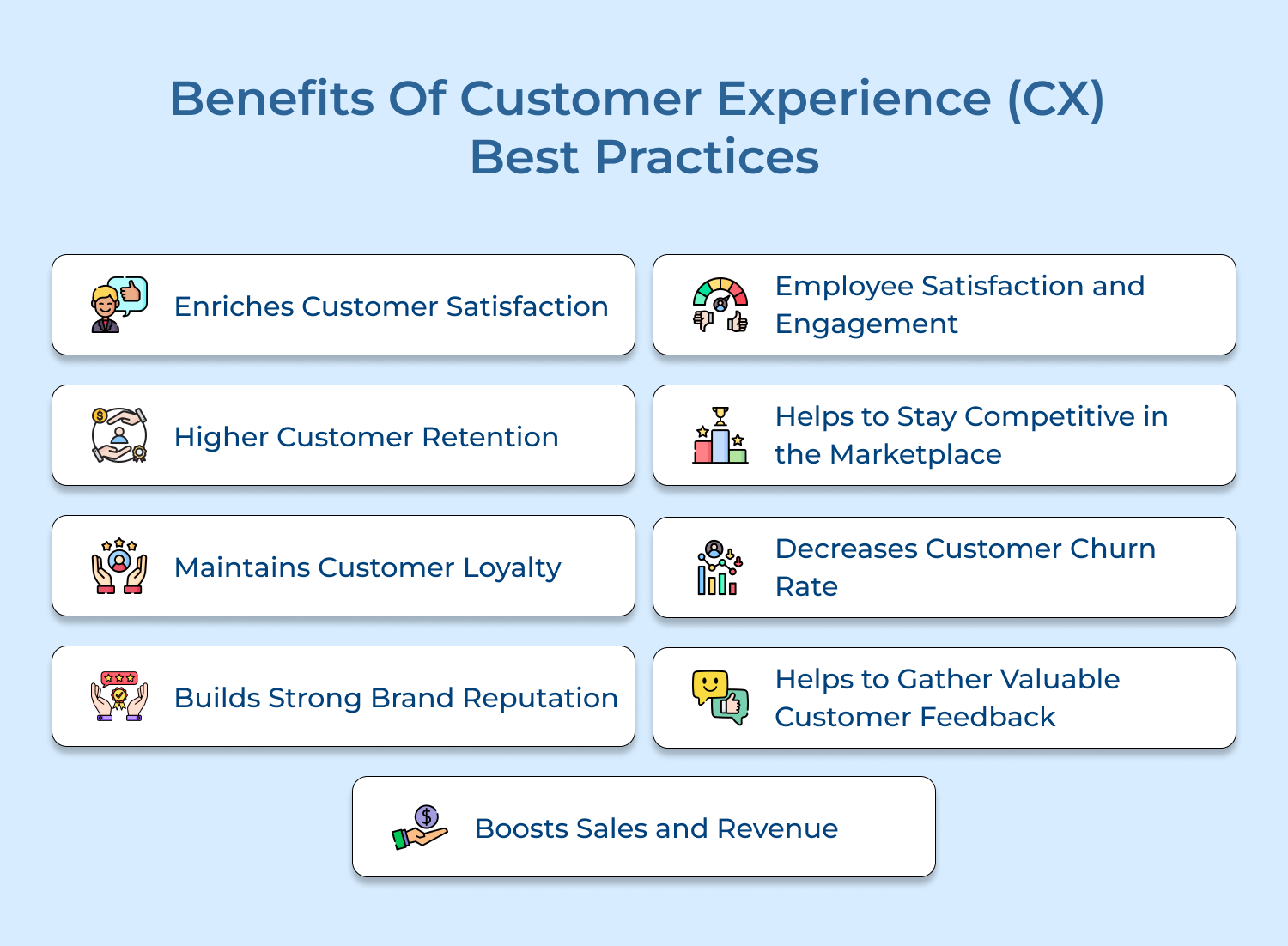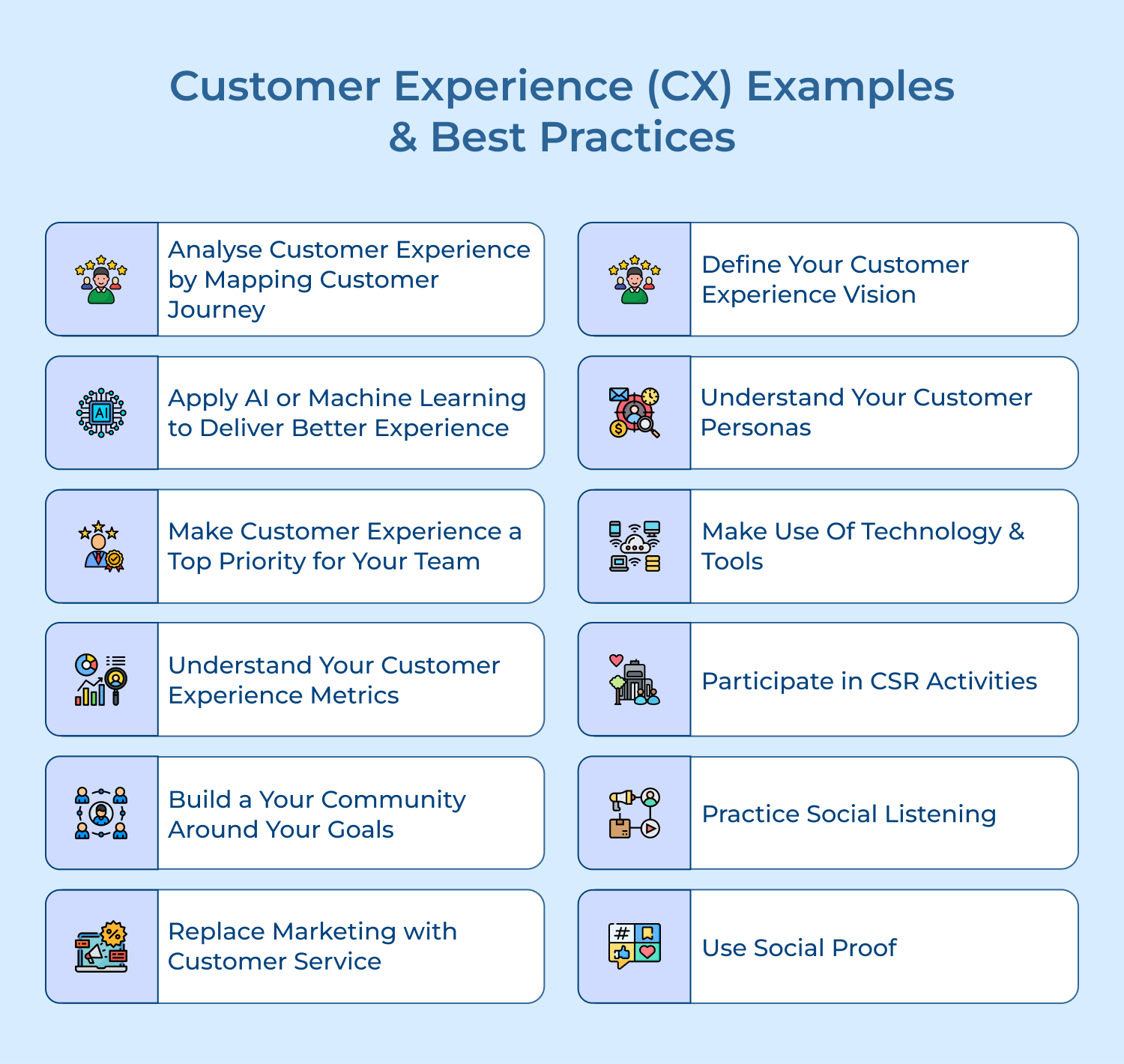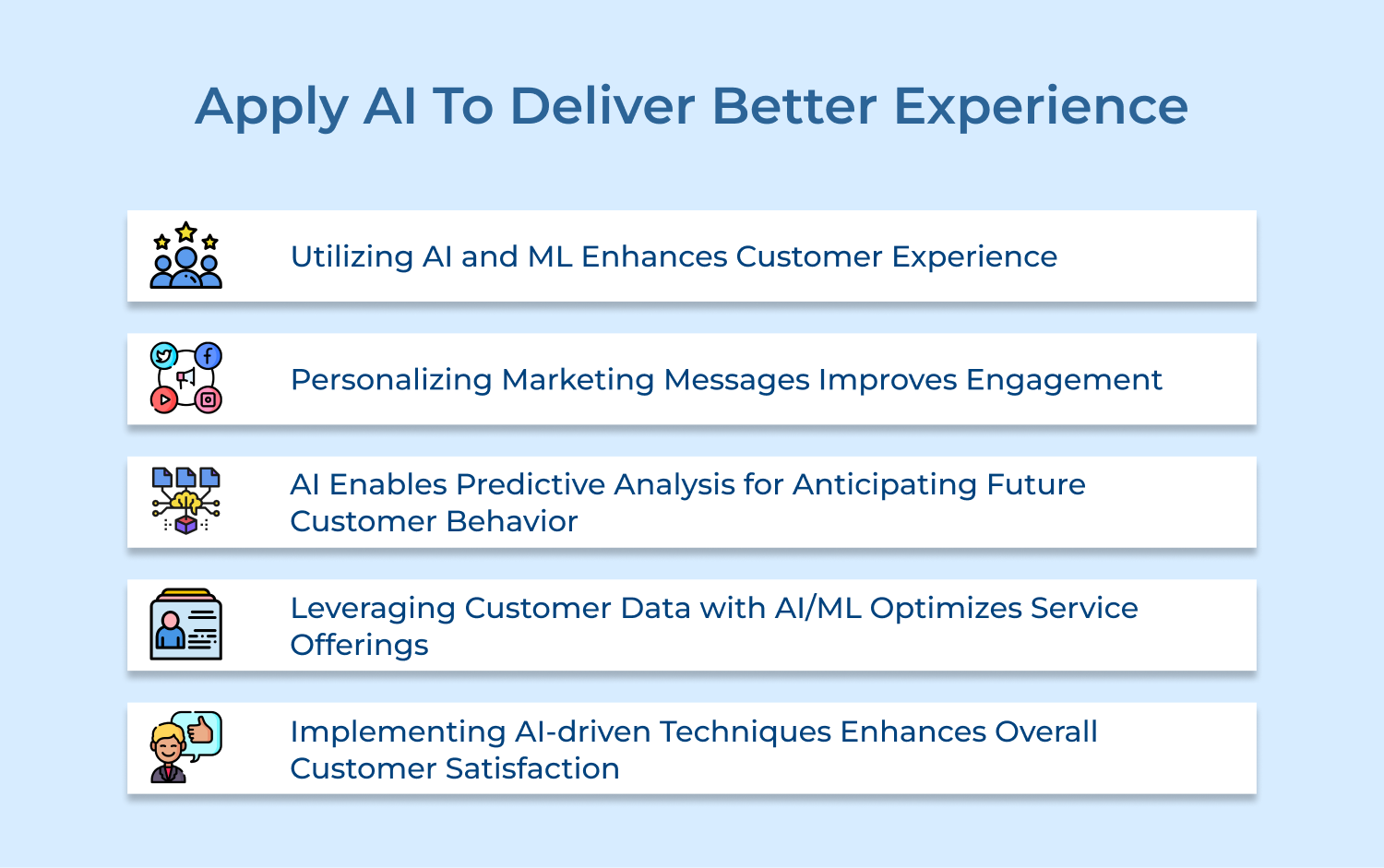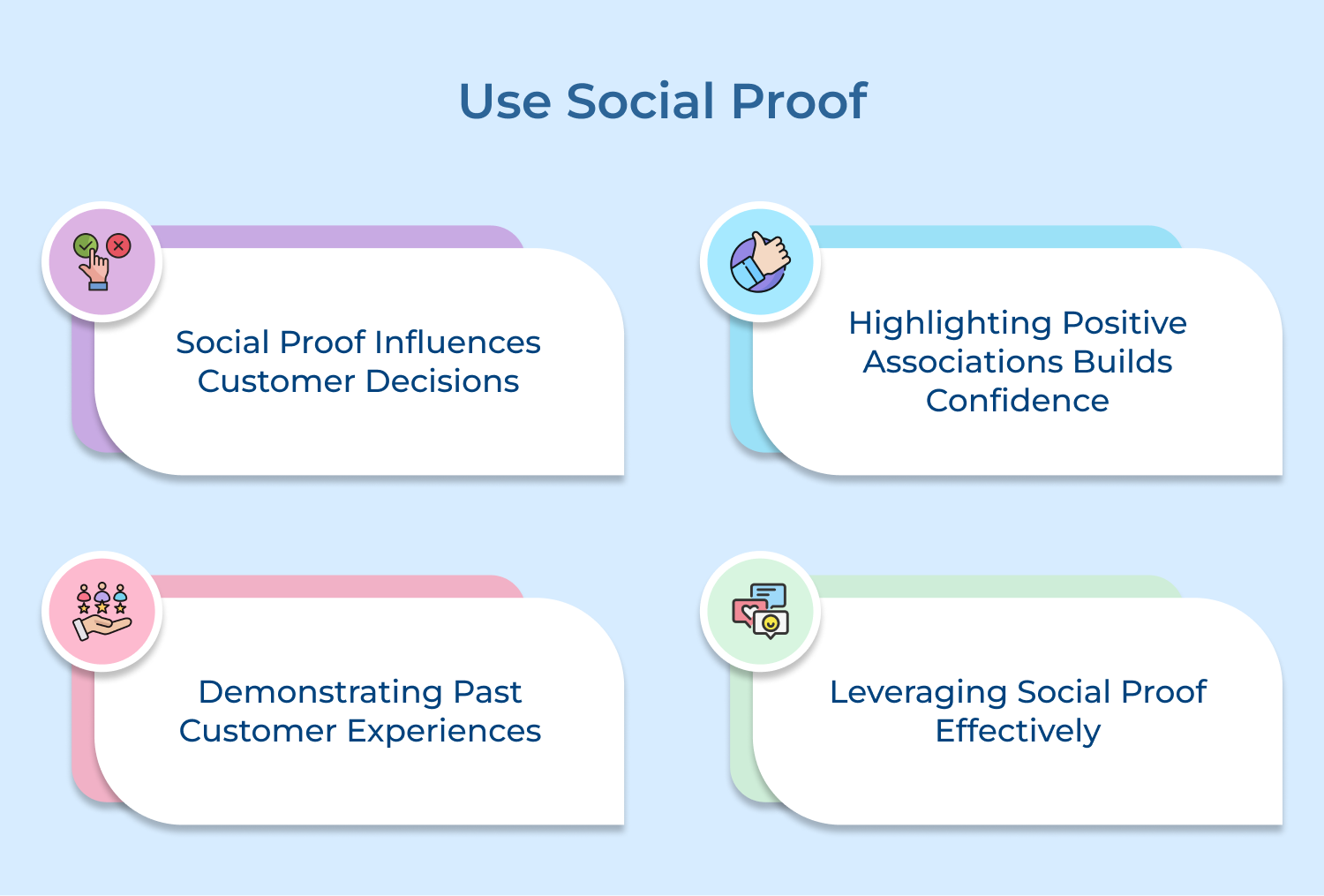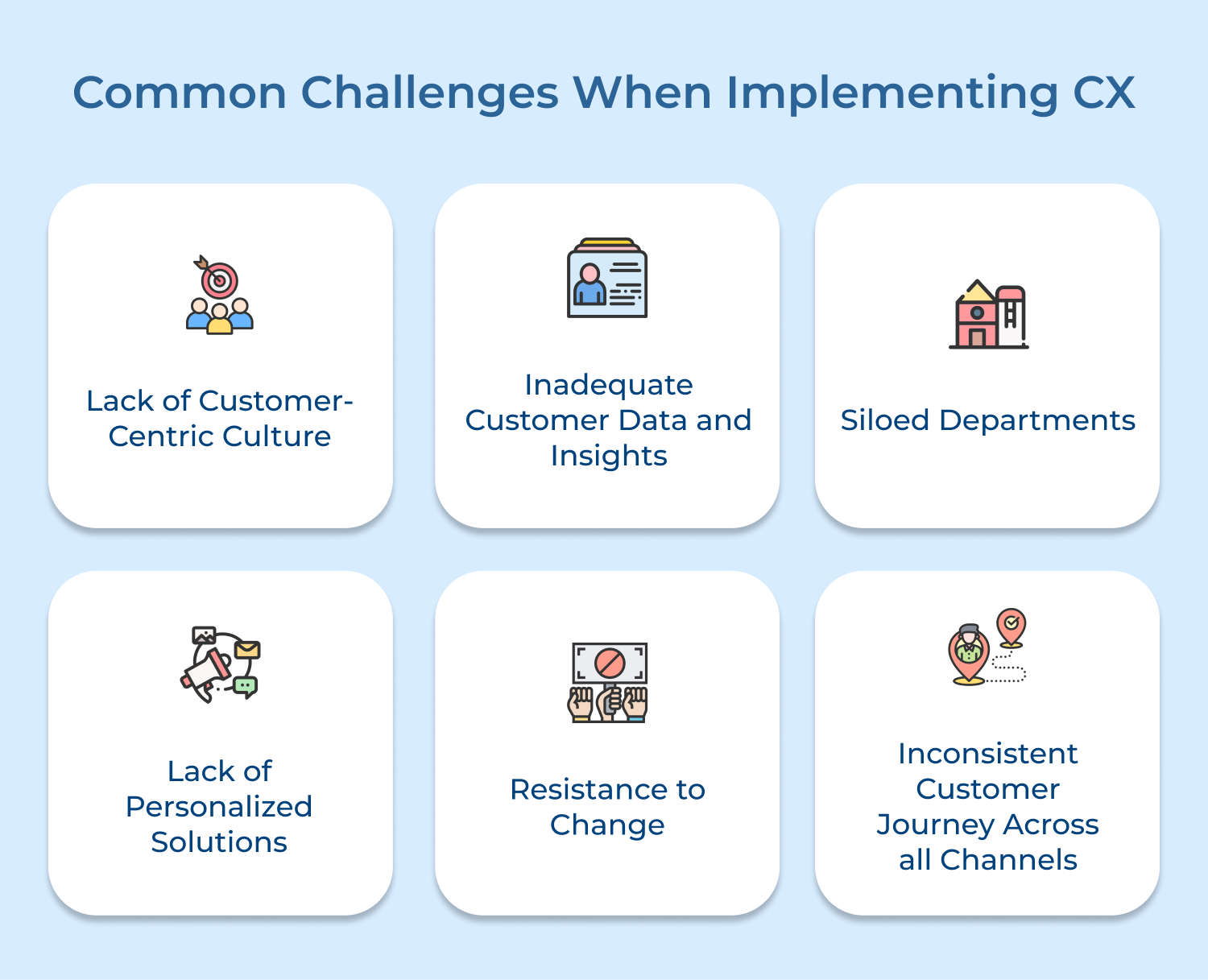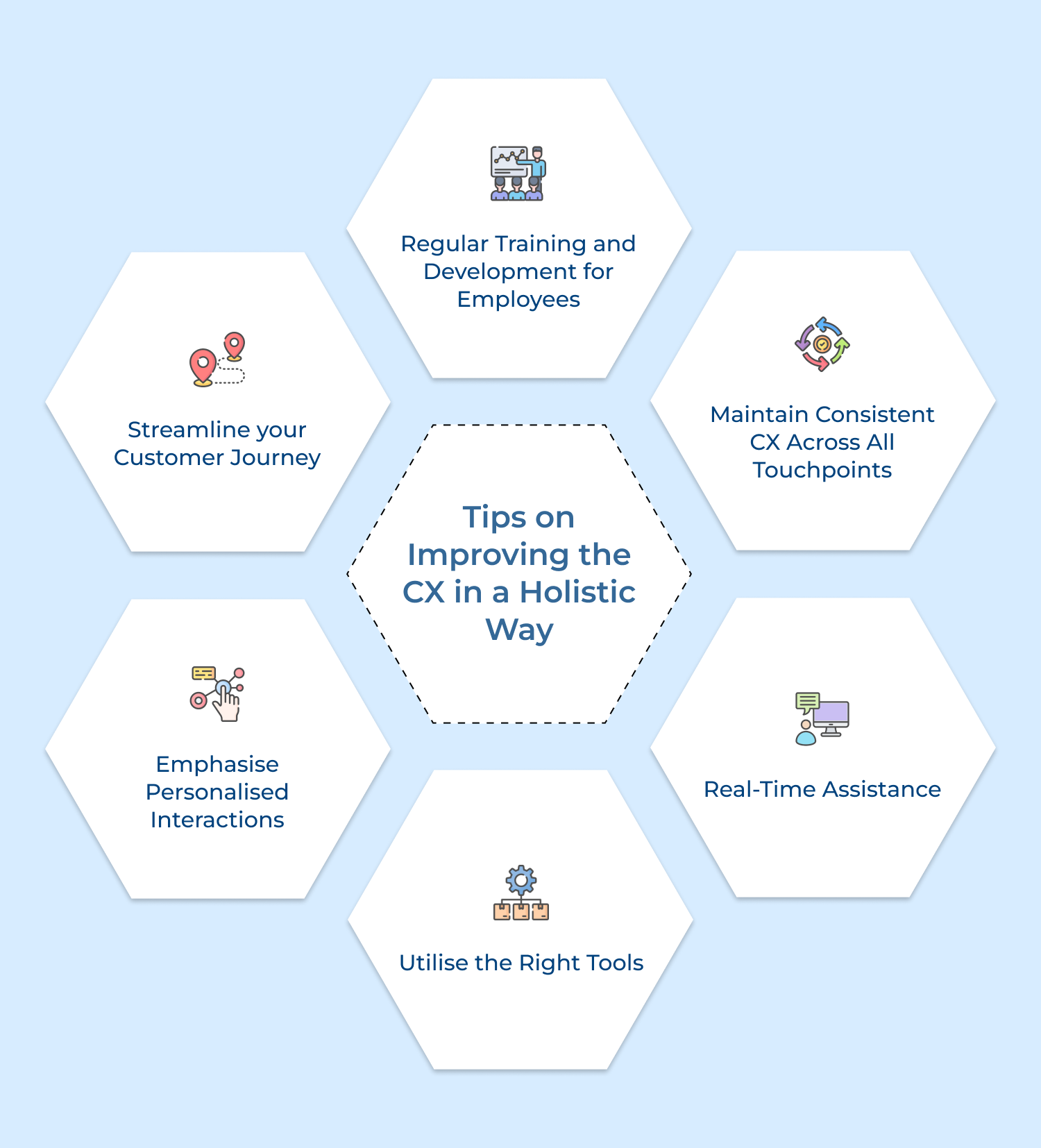1. Lack of Customer-Centric Culture
One of the biggest challenges in implementing customer experience best practices is the lack of a customer-centric culture within the organization. It occurs when employees are not fully aligned with customer needs and do not priorities delivering exceptional customer experiences.
Solution: Overcome the challenge, it is crucial to cultivate a customer-centric culture at all levels of the organization. It can be achieved by providing comprehensive training programs that educate employees about the importance of customer experience and its impact on the business’s success. Implementing performance metrics and incentives that promote customer satisfaction can further reinforce a customer-centric culture.
2. Inadequate Customer Data and Insights
Businesses require a deep understanding of their customers to provide personalized experiences. A lack of adequate customer data and insights can hinder the implementation of customer experience best practices.
Solution: Invest in robust customer data management systems and tools that capture relevant customer information across different touchpoints. Analyzing the data will provide valuable insights into customer preferences, behaviors and pain points. Leveraging customer relationship management (CRM) software can enhance customer data management and enable personalized interactions.
3. Lack of Personalized Solutions
Customers expect personalized experiences that cater to their specific needs and preferences. Organizations often struggle to deliver personalized solutions due to a lack of understanding or resources.
Solution: Utilize customer data as well as insights to create customer personas and segments. The segmentation allows businesses to tailor their products, services and marketing efforts towards different customer groups. Implementing personalization technologies, such as artificial intelligence and machine learning algorithms can further enhance the ability to deliver personalized experiences at scale.
4. Inconsistent Customer Journey Across all Channels
Multiple touchpoints available for customers to engage with businesses, maintaining consistency throughout the customer journey can be challenging. Inconsistencies may lead to confusion, frustration and a subpar customer experience.
Solution: Implement an omnichannel strategy that ensures a seamless and consistent customer journey across all channels. It involves integrating various channels, such as websites, social media, email, mobile apps and physical stores to provide a unified experience.
5. Resistance to Change
One of the biggest obstacles in implementing customer experience best practices is resistance to change. Employees may be comfortable with the current way of doing things and may view the new practices as unnecessary or burdensome. Overcoming the resistance is essential for successful implementation.
Solution: Offer comprehensive training programs to ensure employees have the necessary skills to implement the new practices. Provide ongoing support and guidance to address any concerns or questions that may arise during the transition period.
6. Siloed Departments
Another challenge when implementing customer experience best practices is the existence of siloed departments. Siloed departments can cause inefficiencies, lack of collaboration, and inconsistent customer experiences.
Solution: Instill a customer-centric mindset throughout the organization. Emphasize the importance of putting the customer at the Centre of all decisions and processes. It will encourage departments to work together to provide a seamless and consistent experience for customers.
Tips on Improving the Customer Experience in a Holistic Way
Customers want exceptional experience from start to finish. Here are some tips on how to improve the customer experience in a holistic way:
